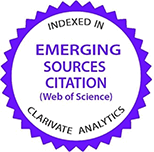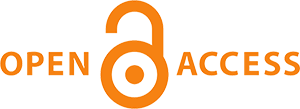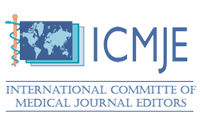













Bir Eğitim ve Araştırma Hastanesinde İFA Yöntemiyle Çalışılan Otoantikor Sonuçlarının Retrospektif Olarak Değerlendirilmesi
Gülseren Samancı Aktar1, Zeynep Ayaydın1, Arzu Rahmanlı Onur1, Demet Gür Vural2, Hakan Temiz21Gazi Yaşargil Eğitim ve Araştırma Hastanesi Mikrobiyoloji ve Klinik Mikrobiyoloji Laboratuvarı, Diyarbakır, Türkiye2Gebze Fatih Devlet Hastanesi Mikrobiyoloji Laboratuvarı, Kocaeli, Türkiye
Introduction: The present study evaluated the results of indirect fluorescent antibody (IFA) method performed in the specimens sent to our laboratory to be diagnosed in terms of autoimmune diseases. Materials and Methods: A total of 10.659 serum specimens, which had been sent to our Microbiology Laboratory between 10.03.2014 and 21.07.2015, were retrospectively evaluated by IFA method. The serums were analyzed by IFA technique (Euroimmun AG, Lübeck, Germany) after diluting by 1/100 for Antinuclear antibody (ANA), Antimitochondrial antibody (AMA) and Antismoothmuscle antibody (ASMA), by 1/10 for Anti Double Strain DNA (Anti-ds DNA), Perinuclear Anti-Neutrophil Cytoplasmic Antibodies (p-ANCA), Cytoplasmic Anti-Neutrophil Cytoplasmic Antibodies (c-ANCA), Anti Glomerular Basal Membrane Antibody (Anti GBM), antigliadin antibodies, andantiendomisium antibodies as instructed by the manufacturer. Results: The serums were positive by 20% (n=4363) for ANA, 1.3% (n=450) for AMA, 0.8% (n=368) for ASMA, 1.2% (n=1566) for anti-ds DNA, 2.5% (n=888) for p-ANCA, 1.1% (n=888) for c-ANCA, 4.3% (n=2739) for antiendomisium IgA, 2.9% (n=2739) for antigliadin IgA, 3.1% (n=2739) for antiendomisium IgG, and 5.8% (n=2739) for antigliadin IgG. No positivity was determined for anti GBM test (n=27). Nuclear granular (39.8%), nucleolar (20.9%), and homogenous (19.9%) patterns were the most common patterns observed in ANA (+) serums. Conclusion: It was determined that granular (39.8%), nucleolar (20.9%), and homogeneous (19.9%) patterns are the most prevalent and nuclear dot (1.3%) and nuclear membrane (0.8%) patterns were the least prevalent in the ANA IFA tests. Female cases accounted for the majority of the positive results in the tests. Highest ratio of positivity was determined to be 20% in ANA test, while the lowest positivity was determined in the ASMA test by 0.81%. Based on these results, a titration study is planned in ANA (+) cases in collaboration with other clinics.
Keywords: Indirect fluorescent antibody technique, autoantibodyRetrospective Evaluation of Results of Autoantibodies Detected by IFA in a Training and Research Hospital
Gülseren Samancı Aktar1, Zeynep Ayaydın1, Arzu Rahmanlı Onur1, Demet Gür Vural2, Hakan Temiz21Gazi Yaşargil Eğitim ve Araştırma Hastanesi Mikrobiyoloji ve Klinik Mikrobiyoloji Laboratuvarı, Diyarbakır, Türkiye2Gebze Fatih Devlet Hastanesi Mikrobiyoloji Laboratuvarı, Kocaeli, Türkiye
Giriş: Bu çalışmada otoimmün hastalıkların tanısı için laboratuvarımıza gelen örnekler ile yapılan İndirekt Floresan Antikor (IFA) sonuçları değerlendirilmiştir. Gereçler ve Yöntemler: Mikrobiyoloji laboratuvarımıza 10.03.201421.07.2015 tarihleri arasında otoimmün hastalık ön tanısı gelen 10.659 serum örnekleri İFA yöntemi ile retrospektif olarak değerlendirilmiştir. Üretici firmanın (Euroimmun AG, Lübeck, Germany) önerisi doğrultusunda IFA tekniğiyle serumlar anti-nükleer antikor (ANA), anti-mitokondrial antikor (AMA) ve anti-düz kas mitokondrisi antikoru mitokondrial antikor (ASMA) için 1/100 oranında, anti-çift zincirli DNAya karşı antikor (anti-ds DNA), perinükleer anti-nötrofil sitoplazmik antikor (p-ANCA), sitoplazmik anti-nötrofil sitoplazmik antikor (c-ANCA), anti-glomeruler bazal membran (anti GBM), anti-gliadin antikorları ve anti-endomisyum antikorları için 1/10 oranında sulandırılarak çalışılmıştır. Bulgular: Örneklerde %20 (n=4363) ANA, %1,3 (n=450) AMA, %0,8 (n=368) ASMA, %1,2 (n=1566) anti-ds DNA, %2,5 (n=888) p-ANCA, %1,1 (n=888) c-ANCA, %4,3 (n=2739) anti-endomisyum IgA, %2,9 (n=2739) antigliadin IgA, %3,1 (n=2739) anti-endomisyum IgG, %5,8 (n=2739) anti-gliadin IgG pozitif bulunmuştur. Anti-GBM testinde (n=27) pozitiflik saptanmadı. ANA pozitif testlerden, en sık paternlerin nükleer granüler %39,8, nükleolar %20,9, homojen %19,9 olarak değerlendirilmiştir. Sonuçlar: ANA İFA testinde en yüksek oranın granüler (%39,8), nükleolar (%20,9) ve homojen (%19,9) olduğu, en düşük oranın nükleer dot (%1,3) ve nükleer membran (%0,8) paternleri olarak değerlendirilmiştir. Çalışılan testlerde pozitif olguların çoğunluğunu kadınların oluşturduğu görülmüştür. En yüksek pozitiflik oranının ANA testinde %20, en düşük pozitiflik oranının ASMA testinde %0,81 olduğu tespit edilmiştir. ANA pozitif olgularda kliniklerle işbirliği yapılarak titrasyon çalışılması planlanmıştır.
Anahtar Kelimeler: İndirekt floresan antikor tekniği, otoantikorManuscript Language: Turkish




